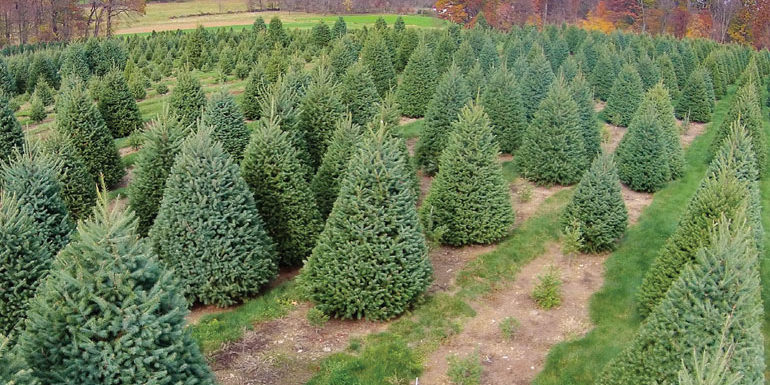Picking the Perfect Tree
Christmas comes but once a year, and picking out the perfect tree to jolly up the living room is a family ritual full of fun and promise. But with all the different types of trees out there, it’s hard to know which one is right for your holiday display. And knowing how to keep it green and fragrant once you deck it out is a talent that eludes many a yuletide reveler. “When a tree goes south,” says This Old House landscape contractor Roger Cook, “ninety-nine percent of the time it’s human error.” So before you turn your tannenbaum into the Charlie Brown special, take a few tips from our experts on how to pick one, measure for it, and make sure it lasts through December 25 and maybe into the New Year.
Once you’re perusing the lot, picking the right tree is like picking ripe mango: you should smell and touch.
1. Test the branches. Grab any branch on the tree between your thumb and forefinger, gently clamp down and pull towards yourself. If you end up with a handful of needles, the tree is already past its prime.
2. Crush the needles in your hand and then check the scent. “If the tree doesn’t smell enough, don’t buy it,” says Roger.
3. Bounce the tree by holding it a few inches above the ground and dropping it. If the exterior needles fall off, it’s sure sign of a bad apple. Needles that fall off from the interior of the tree are normal.
4. Make absolutely sure the tree’s trunk fits your stand. Trimming the diameter of the tree by cutting away the bark will strip the tree of its cambium layer, which absorbs water. If this happens your tree is a goner.
Before you tie up the tree, have the lot attendant put it through a shaker (if they have one—some farms use a blower, though a vigorous bounce will do as well). This will shake off any dead, interior needles. Don’t worry—it’s perfectly natural for an evergreen to have some dead needles on it from fall. Then have the tree sent through the baling machine to wrap it in netting for easy transport.
Make a Fresh Cut
Cutting the end off the trunk is critical to opening up the veins that will deliver water to the branches. Use a pruning saw, and take at least an inch off. You can have the lot do it before you leave if you’re headed for home, but you should wait if you’re going to be out more than four hours. Otherwise, the end will glaze over with new pitch, and the tree won’t take up water.
Now you’ll have to fit the tree into the stand. Most stands have small prongs in the bottom to hold the center of the tree. After the trunk has been cut you may have to remove a few bottom limbs so that you can make contact with those prongs and the bottom of the trunk rests on the bottom of the tree stand—if not, the tree could swing side to side. While the tree is still wrapped in mesh, place it on its side and use a rubber mallet to drive the stand’s prongs securely onto the trunk before tightening up the thumbscrews that hold the tree in the stand. Before tilting the tree vertical, set down some newspaper or an old rug under where the stand will be to catch any spilled water.
Drink up
Once the tree is upright, add clean water—a lot of it—as soon as possible. “People have to understand the first couple of days the tree is going to suck up at least a gallon of water,” Roger says. The actual amount a tree can consume varies, so be vigilant the first two days, refilling when the stand gets low until the levels stay steady. Never let the water level drop beyond the cut end or you run the risk of pitch forming, which will seal off the tree’s ability to absorb water. Roger also doesn’t see the need for any additives, like aspirin or plant food, as long as the water is clean and fresh.














